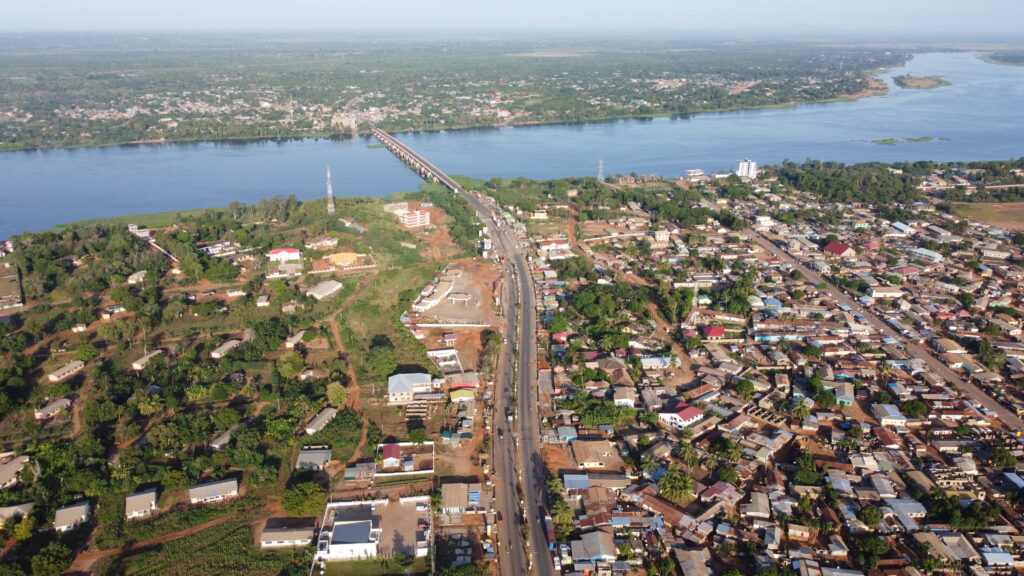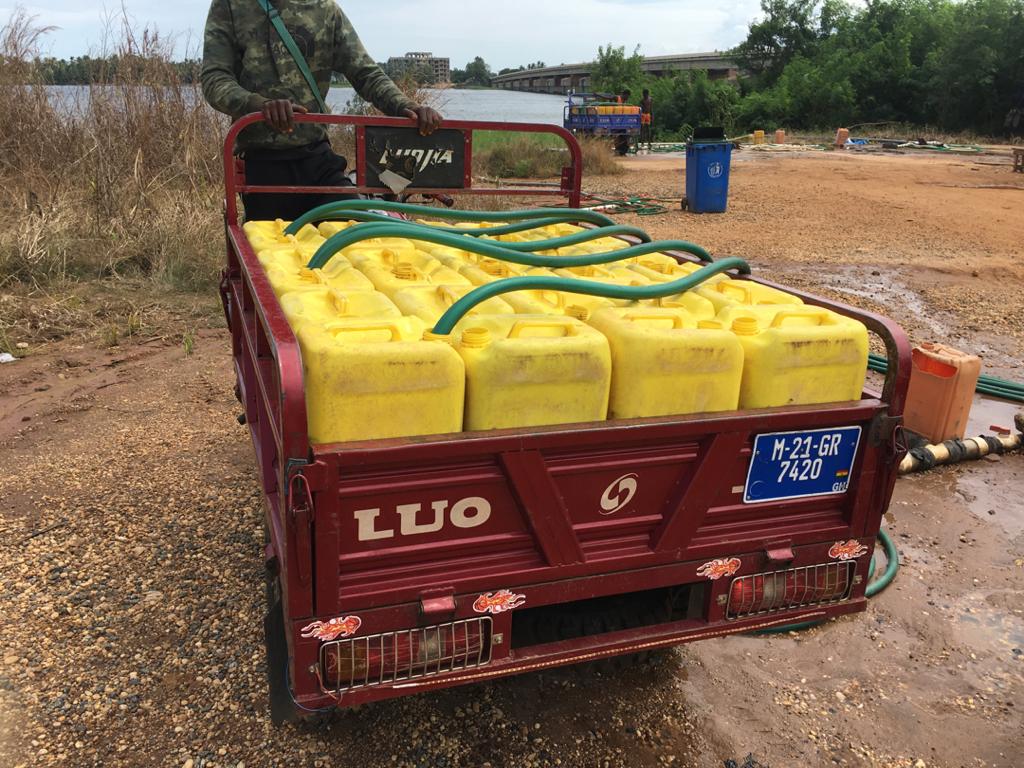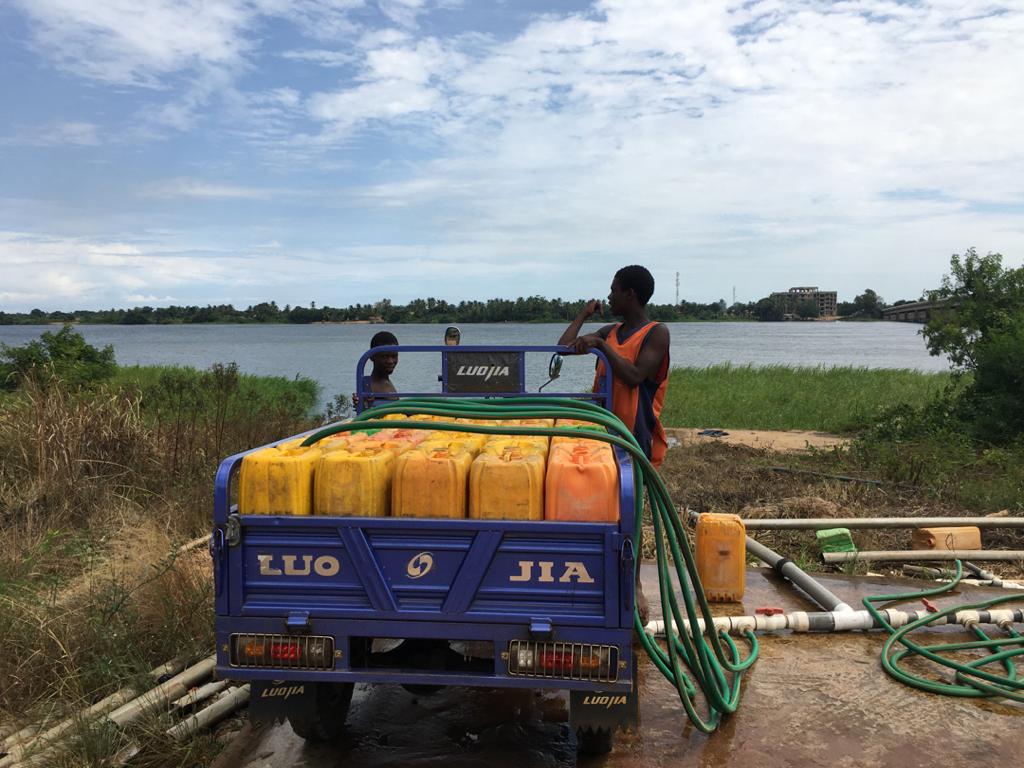In the abundance of water, Sogakope is thirsty

In the second verse of a famous hit song released by the legendary Bob Marley in 1976 titled, “Rat Race”, he bemoaned the fact that “in the abundance of water, the fool is thirsty”.
The context in which he made that profound statement can’t be lost on some countries and communities even in the 21st century, as residents of Sogakope in the South Tongu District, one of the most endowed towns in Ghana with clean drinking water from the Volta river remain thirsty and some use sachet water to brush the teeth.
The river which spans about 640 meters in width and travels over 1500km into neighboring Burkina Faso and Ivory Coast equally kisses the sea at the Ada estuary.
The Volta River splits through the Sogakope town but for the timely intervention of Ghana’s first president Dr. Kwame Nkrumah, who constructed a 650 meters Lower Volta bridge across, it would’ve been difficult to connect Ghana’s capital to its eastern neighbors like Togo and Nigeria.
There is an enormous water resource available to the people of the South, Central, and North Tongu districts in the Volta region, but its residents share muddy and milky drinking water with animals.
Every day and night, residents have to contract motor riders to convey water directly from the river into households for domestic use.
Buying water

According to Worlanyo Ablordeppey, he spends GH¢15.00 on water a week. This water is directly drawn from the Volta river, but pipe-borne water fetched and sold by vendors on motorbikes costs twice that amount. Ablordeppey says he can’t remember the last time water dripped through his tap.
“We have a pipe at home but water flows sometimes once a month. If I need treated pipe water, I spend more”. Worlanyo’s case is one of many of households in the community where pipelines have been laid into their homes but depend on private water vendors. Some households even depend on sachet water to brush their teeth every morning. It has become a demand and supply chain where youth who venture into the water selling business say they make an average earning of GH¢60.00 which amounts to GH¢1,200.00 when their services are engaged consistently for 20 days in a month.
Assembly charges GH¢1.00
The Sogakope district assembly is a four-story building structure housing offices of central government administrative workers, who glimpse directly at the river while tricycle riders between the ages of 14 to 45 years pass on its compound to the bank of the river to pump water into yellow gallons popularly called ‘Kufuor gallons’ in Ghana.
The assembly has mounted a revenue checkpoint on its premises to the river to tax the unemployed youth GH¢1.00 each day per tricycle for fetching water from the river. In effect, the assembly hopes to generate GH¢125 a week and GH¢500.00 a month. Assuming the ‘tax collector’ is paid a daily minimum wage of GH¢12.53, the assembly will incur an expenditure of GH¢375 out of the GH¢500 revenue. The assembly makes a profit of GH¢125 from taxing tricycle water businesses. The youth who found solace in the water fetching business for a living lament about what they describe as the “assembly benefiting from where it hasn’t sown a seed”.

World Water Day
World Water Day, held on March 22 every year since 1993, celebrates water and raises awareness about the 2.2 billion people living without access to safe water. It is about taking action to tackle the global water crisis and achieving Sustainable Development Goal 6: water and sanitation for all by 2030. The theme for this year’s world water day was “Valuing Water”. The residents in Sogakope only see the value of water in GH¢0.70 per gallon (Kufuor gallon).
According to UNICEF, even though access to water in Ghana has improved significantly, one person out of every ten has to spend more than 30 minutes to access an improved source of drinking water. Another 11 per cent of the population, still drink from surface and other unsafe water sources.
In the northern parts of Ghana where the harsh weather condition dries up many water sources, residents are compelled to walk many miles in search of basic commodities such as water. 28 per cent of Ghana’s current population live in areas with scarce water, and this number is projected to rise to 48 per cent by 2030.
John Mahu, who moved from Accra to settle and work in Sogakope, says it’s sometimes difficult to even get water to brush his teeth, and he has to rely on sachet water.
Tricycles
A number of motorbike sales points are springing up in Sogakope. Most of them are diverting into the sale of tricycles due to the new avenue of cash flow.
Currently, more than 25 tricycles visit the bank of the river with fifteen of 50ltr gallons fitted in them to draw water at least five times daily to feed households and construction sites.
Major water project
Bidding was called for the Sogakope-Lome transboundary water supply project since the year 2013.The project according to the Sogakope district director of the Ghana Water Company, Sefianu Osman is a major project currently underway and when fully completed in the next two years will be the panacea to water rationing in the town. He mentioned that there’s nothing they can do at the moment to solve the age-long water problem facing the people of South Tongu and its satellite communities.
Theodore Attigah, a teacher at the Sogakope SHS, said he has to keep wake until 12 midnight with the hope to fill his empty barrels, but this never happens.
There are other residents located some 40 meters from the river with pipes connected to their homes who are facing similar challenges and have to rely on untreated water from the river.
Unlike Ghana’s Eastern and Ashanti regions where illegal mining has destroyed a number of water bodies, turning the white Volta into a thick brown solution, residents in the Volta region still have clean water but underutilized.
The main cause for erratic water supply through the taps according to Osman is due to the shortsightedness of engineers and past governments who failed to anticipate an exponential surge in population growth in the area which has soon caught up with the current generation.
By Fred Duhoe
Copyright ©2021 by NewsBridge Africa
All rights reserved. This article or any portion thereof may not be reproduced or used in any manner whatsoever without the express written permission of the publisher except for the use of brief quotations in reviews.
